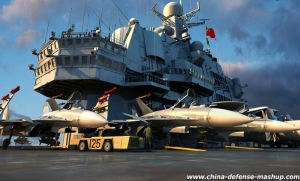
January 15, 1974 is a special day in the history of the conflict in the South China Sea. Exactly forty years ago, at dawn, Chinese “fishermen” started landing on the islands of Robert, Money, Duncan and Drummond of the Crescent Group of the Paracel Archipelago. This clear and calm morning they sailed to these islands not to save themselves from a storm, or to make repairs. Their purpose was to raise the flag of the PRC on these tiny and waterless Vietnamese islands (at that time they were under the control of South Vietnam), and thus to provoke a conflict situation.
They acted according to the scenario tested in 1959 – back then Chinese “fishermen” also landed on these islands, and even raised the flag of China, but as soon as border guards of South Vietnam appeared, they had to retreat quickly. However, this time, the situation began developing in accordance with a completely different scenario. When the authorities of South Vietnam discovered that some “fishermen” had arrived and started erecting household outbuildings and raised the national flags of China on the islands of Robert, Money, Duncan and Drummond, to show sovereignty over them, they tried fighting back by sending a group of border guards there. As a result, on January 16–17 the “fishermen” were expelled from the islands of Robert and Money without any shots being fired by South Vietnamese marine guards, who then tore down the Chinese flags.
But then, things developed in a completely different manner than before: on January 17, Chinese warships with marines, which had been concentrated at the Paracel Archipelago in advance, were sent into the conflict zone. On January 19, they started shelling the islands of Robert, Money and Pattle, and on January 20, Chinese troops landed on the island of Duncan. The day before the island of Drummond was seized, where the South Vietnamese fell into an ambush set up by the Chinese military. The defense of the islands was quickly suppressed, since the correlation of forces in the conflict was clearly unequal, given the great advantage of the Chinese side. The Chinese fleet dominated the sea, and after several clashes, it pushed South Vietnamese patrol ships from the islands. According to some sources, both sides lost one vessel each.
Attempts of the South Vietnamese regime to obtain support from American military and political leaders failed. American ships indifferently watched the defeat of the troops of their recent ally, and provided support only in the evacuation of several island garrisons. Thus, the military operation on the islands was completed in just a few days, and Beijing established complete control over the entire Paracel Archipelago by evening of January 20, 1974.
Back then, in January 1974, this event did not remain the center of interest of the world community for long. It is quite clear why – the Americans did not want to attract attention to Beijing’s aggressive actions, as in theory, it was they who had to support their South Vietnamese allies. However, in 1971, the Secretary of State H. Kissinger visited Beijing, and in 1972, China and the U.S. signed the Shanghai Joint Communiqué that opened the era of cooperation between the two countries, aimed at opposing the “Soviet Threat”. The Americans considered China as an ally against the Soviet Union in the “cold war”, and Beijing’s new relationship with the United States not only opened the possibility of its exiting from international isolation, along with other benefits, but also provided favorable conditions for resolving the conflict over the Paracel Islands by military means.
The authorities of PRC rightly believed that the prospects for jointly opposing the USSR were far more important to Washington than the fate of several small and deserted islands in the South China Sea, and thus the Americans would “close their eyes” to the military action of Beijing for this reason. And that is what happened. Thus, if we analyze the entire course of events, we can say that China acted with the tacit consent of the United States. Therefore, they tried to comment on these events as quickly and quietly as possible in the American press, and in the global media as well.
Today it is quite clear that these military confrontations, which can be rightfully called a lightning war, did not have a local and not even a regional importance. In a sense, they were one of the first signs of China’s return to an active foreign policy aimed at annexing to the “Celestial Empire” all the territories that had been allegedly lost by it during the so-called historical weakness of China in the 19th century and the first half of the 20th century. In addition, the attack on, and the seizure of, the Paracel Archipelago became the first military conflict in the history of disputes over these islands in the South China Sea. The flights of bombers and the shooting from ships showed that disputes about the islands in the South China Sea turned from a latent and mostly virtual state, that is, a conflict on maps, into a real “hot conflict”.
(To be continued)
Dmitry Mosyakov – Professor, Doctor of Historical Sciences, Director of the Center for Southeast Asia, Australia and Oceania and the Institute of Oriental Studies of the Russian Academy of Sciences, exclusively for the online magazine New Eastern Outlook.
